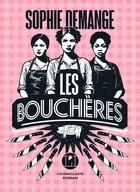-
Date de parution : 11/06/2021
-
Editeur :
Paul Holberton
-
EAN : 9781913645106
-
Série :
(-)
-
Support :
Papier
Résumé:
Ce catalogue apprécié présente le nouveau savoir passionnant sur le travail de l'artiste américano-mexicaine, Elizabeth Catlett (1915-2012). Accompagnant une exposition au Memphis Brooks Museum of Art, Persevere and Resist: The Strong Black Women of Elizabeth Catlett réexamine ses oeuvres sous... Voir plus
Ce catalogue apprécié présente le nouveau savoir passionnant sur le travail de l'artiste américano-mexicaine, Elizabeth Catlett (1915-2012). Accompagnant une exposition au Memphis Brooks Museum of Art, Persevere and Resist: The Strong Black Women of Elizabeth Catlett réexamine ses oeuvres sous l'angle de la psychologie et de la sociologie contemporaines.
Catlett was one of the most important visual chroniclers of the African American experience in the 20th century. In 1946, she was awarded the prestigious Rosenwald Fund Fellowship to travel to Mexico. Her early experiments with printmaking with the Taller de Gráfica Popular resulted in a series of 15 prints titled, The Black Woman (1946-1947) of which the Memphis Brooks Museum of Art is one of only three known American arts institutions to own a full series. In addition to her print and drawing practice, Catlett was also an accomplished sculptor working in stone, wood, and clay in her lengthy career, which spanned over six decades.
Taking The Black Woman series as a point of departure, Heather Nickels will explore Catlett's oeuvre as illustrative of such contemporary phenomena as the «StrongBlackWoman» (SBW) trope, Afrofemcentrism, and misogynoir. Nickels will offer an alternative reading of the stances, postures, and expressions of Catlett's women, considering the impact of intergenerational trauma, with its roots in chattel slavery, on African Americans. After examining the SBW trope and its paradoxes, she poses the question «What now?» and considers possible remedies through an examination of the ways in which Black artists have mined pain and sorrow to inform and inspire literary, performing and visual production, creating Black joy in spaces made by and for Black women.
Donner votre avis















